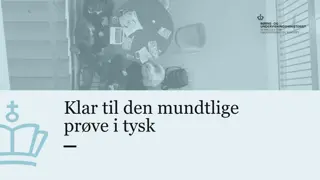
Power Dynamics Between Mayors and Councillors in Canadian Municipalities
Explore the intricate power relationships between mayors and councillors in Canadian municipalities, shedding light on how councillors hold considerable influence, factors affecting power dynamics, and avenues for councillors to reclaim their authority.
Download Presentation

Please find below an Image/Link to download the presentation.
The content on the website is provided AS IS for your information and personal use only. It may not be sold, licensed, or shared on other websites without obtaining consent from the author. If you encounter any issues during the download, it is possible that the publisher has removed the file from their server.
You are allowed to download the files provided on this website for personal or commercial use, subject to the condition that they are used lawfully. All files are the property of their respective owners.
The content on the website is provided AS IS for your information and personal use only. It may not be sold, licensed, or shared on other websites without obtaining consent from the author.
E N D
Presentation Transcript
Power Relations Between Mayors and Councillors Dr. Meir Serfaty Professor and Chair, Political Science Department Brandon University May 11, 2015
What this presentation is about Demonstrating that councillors in most Canadian municipalities have almost powers equal to mayors, especially in policy-making Showing that whether they exercise those powers or not is often dependent on factors primarily internal and behavioral to council and councillors, as well as on external actors, such as the public and the media, rather than on legal or political factors Serfaty 2015
Where this paper originated Observation of councils behavior over the years, where councillors have tended to be reactive rather than proactive The City of Brandon smoking by-law of 2002, sponsored by councillor Errol Black, crusader anti- smoking in public places, broke with councillors general traditional passivity Black conceived, developed, led in discussion, recommended, helped to implement, supervised and eventually evaluated the by-law, which was passed nearly a year after its introduction He not only ensured passage of the toughest possible version of the by-law, but successfully opposed the City of Brandon s implementation of a subsequent weaker provincial version Serfaty 2015
An overview of the presentation Set out the typical governmental decision-making process in order to understand roles Establish the major differences in political systems and, consequently, in power relations between political actors at the federal and provincial levels on the one hand, and at the municipal level on the other Explain why and how mayors have gained powers over councillors Suggest how councillors can re-gain some or most of their legally-conferred powers Serfaty 2015
The parameters of the study Manitoba municipalities serve as the primary example. Much of my research relates to this province Although other rural and small urban Canadian municipalities have a similar system with respect to the role of council and its members, they are not identical. Hence, my assessment may not apply equally to each and every province/municipality In general, however, Canada, unlike the US, does not have any example of the strong mayor system of government, where the mayor controls the administration; hence most of the comments below apply to nearly all Canadian municipal governments (continues ) Serfaty 2015
(continued) Some large cities with civic parties (e.g. Vancouver, Montreal), have a system that contains aspects of the strong mayor system, in that power relations are structured in a similar fashion to national politics Some provincial jurisdictions have allowed the mayors to become stronger by creating executive committees centrally (Winnipeg, Toronto) This presentation is not intended to take sides on whether it is a good idea for individual councillors to challenge the power of mayors; it does, however, advocate for the right and duty of the entire council to discharge the full range of their policy-making responsibilities The presentation is based on theoretical, legal and observational evidence; it is both explanatory and prescriptive; more specific case study research is required to validate these findings fully Serfaty 2015
A simplified model of the policy- making process Policy/decision-making requires the following sequence: INITIATION INITIATION: Developing and introducing of new policy DELIBERATION DELIBERATION: Discussing and considering the proposal and its alternatives RECOMMENDATION RECOMMENDATION: Advocating for approval ADOPTION AND RATIFICATION ADOPTION AND RATIFICATION: Approving IMPLEMENTATION: IMPLEMENTATION: Carrying out of decisions made SUPERVISION SUPERVISION: Watching over administration to ensure proper implementation of decisions ADJUDICATION: ADJUDICATION: Settling conflict in disputes, acting in judgment in accordance with the law EVALUATION EVALUATION: Reviewing policy after a period to determine whether it works Serfaty 2015
How federal and provincial governments make policy At the federal and provincial levels, executives, legislatures and courts are clearly separated in theory (although in Canada the executive normally controls the legislature) At the federal and provincial levels, executives themselves are themselves divided as follows: Political sub-branch (cabinet and P .M. or premier); Bureaucratic sub-branch (public/civil service) and Formal-ceremonial sub-branch (Queen s representatives) (continues ) Serfaty 2015
(continued) All aspects of decision-making are, therefore, largely dispersed among the branches of government, as follows: The executive branch is primarily responsible for: a) Initiation, deliberation, recommendation, supervision (political sub-branch); b) Ratification (formal sub-branch); c) Implementation and evaluation (bureaucratic sub-branch) The legislative branch is primarily responsible for adoption, some supervision The judicial branch is primarily responsible for adjudication Serfaty 2015
How municipal governments make policy At the municipal level, councils are expected by legislation to discharge almost the full sequence of steps in decision-making, including even some aspects of adjudication (i.e. although they are subject to court decisions on the validity of by-laws, they hold public hearings on planning and other issues). Only implementation is normally outside their purview (and, then, in the hands of a CAO or administrative group, not the mayor) Councils, therefore, are ceremonial, political and (partly) administrative executives as well as legislatures, and (partly) courts; hence it could be argued that their power is relatively greater than that of the various federal or provincial governmental structures Serfaty 2015
Power relations in federal and provincial governments The Westmister system of responsible government makes for separate BUT interdependent roles for the executive and legislative branches Ultimately, the political executive controls the legislature through its control of the members of the majority party The judicial branch is independent Serfaty 2015
Power relations at the municipal level The Canadian municipal model does not separate the political executive from the legislature, nor does it create a chief political executive or legislator. Most of the roles related to these branches are (or can be) discharged by the same group of people, namely the entire council. Through Municipal Acts (and/or specific charter, city acts), provinces provide the skeleton framework within which power relations operate, always around council as a whole With very few exceptions, then, provincial governments have allowed councils at their discretion to act as both an executive and a legislature, and to decide who among their members will discharge their responsibilities and to what extent Serfaty 2015
Provinces partly determine the powers of c councils ouncils They establish general electoral processes and systems, including eligibility and terms of office They establish broad (but not all!) procedural governance aspects, including general conduct of meetings and the duties and responsibilities of council, including mayors and councillors, among others Serfaty 2015
Provinces partly determine the powers of c council ouncil m members embers These duties pertain to council as a whole, and include for the most part and equally mayors and councillors. They include, among others, the following critical ones (Municipal Acts): Participating, as a council, in the development, evolution and adoption of policies and programs (initiation, deliberation, recommendation, adoption steps of policy-making) Ensuring that municipal powers are carried out properly (supervision) Serfaty 2015 (continues )
(continued) Many Municipal Acts require that, regardless how they get elected, all members of council (including mayors and councillors) must consider being of the municipality as a whole being of the municipality as a whole when discharging their duties (i.e. not their constituents well-being). consider the well the well- - The role of representation ascribed to councillors, particularly in ward elections, is thus largely assumed via elections, and not necessarily at council meetings Serfaty 2015
Provinces partly determine the power of mayors mayors Typically these powers include the following: Presiding over meetings (although they can relinquish that role to someone else; this is not necessarily an advantage as they cannot participate fully in debates) Providing general leadership and direction to council Providing general leadership and direction to council Representing the municipality in relation to the Representing the municipality in relation to the external world, including the province, other external world, including the province, other municipalities, federal government and the community municipalities, federal government and the community at large at large The last two are factors that could enhance their power vis- -vis councillors in certain areas, but not not generally in policy-making could possibly permit mayors to Serfaty 2015
Councils play an important role in determining the relative power of their members Particularly through organizational by relate to the way they operate, including in particular the types and numbers of executive and/or standing and other (internal and external) committees, how meetings are called, processed and reported organizational by- -laws laws that Through procedural by procedural by- -laws meetings are conducted, how by-laws are debated, recorded etc. laws which deal with how Serfaty 2015
Reasons that mayors powers have increased (with councils consent!) They have ceremonial and symbolic duties (BUT council can add/take away some of these powers) They are able to call special meetings number of them) (BUT councillors can also do so at the request of a They are normally elected at large (BUT council can decide in many jurisdictions whether councillors can too) (continues ) Serfaty 2015
(continued) They tend to be close to the CAOs hiring, firing and holding them responsible) (BUT council, and not the mayor, is responsible for They are more likely to be full-time members councillors can (BUT not in rural/small urban centres; besides, too if they so choose) They are normally ex-officio member of all committees of council (BUT council may decide otherwise) In other words, In other words, councillors relinquished relinquished/delegated some/many powers /delegated some/many powers to mayors councillors have often voluntarily have often voluntarily to mayors Serfaty 2015
Other (external) reasons that mayors powers have increased Their broader public visibility People mistakenly confuse their power with that of the premier/ PM in their relation to the councillors They are the focus of the media, often the province and other community groups external to council They are expected to be knowledgeable about every matter affecting the municipality Serfaty 2015
Reasons why councillors are weaker than mayors They constitute a disparate group: cohesion or collective will does not exist, it needs to be harnessed They usually have no specific involvement in policy areas or in supervising or dealing with departments They are constrained by rules of procedure during meetings They are often not privy to general council business until just prior to meetings: they need to make a special effort to be engaged (continues ) Serfaty 2015
(continued) They often hold part-time positions and have a large agenda and little time to develop long-term plans, strategy or vision for the municipality as a whole They perceive (often mistakenly) that they have lower levels of competency, confidence, experience or political skills Unlike mayors, there is no expectation in the public that councillors are leaders in council Serfaty 2015
(continued) They have unclear mandates: roles of representation (ward vs. city-wide) collide There is little expectation of accountability beyond personal ability to deliver to specific sets of constituents When they represent wards, they are perceived as less visible and legitimate by the whole municipality Serfaty 2015
Why councillors can exercise powers similar to mayors They have equal powers to those of the mayor in the most important role: policy-making. Thus, if they are willing, they can initiate, draft, recommend policies, persuade other members, and then help supervise their implementation and evaluation Councillors have one vote, the same as mayors (in some jurisdictions, mayors don t have a vote except to break a tie) (Continues ) Serfaty 2015
(continued) Particularly in smaller municipalities, they can be legally elected at-large They are usually few in numbers (most councils, even in larger municipalities, have fewer than ten members), and can be, therefore, very active, visible and engaged They can become leaders, especially if mayors are not interested in, or capable of, leading Serfaty 2015
What councillors need to do to increase their collective and individual effectiveness as local leaders Ensure that procedural and organizational by- laws do not obstruct their ability to do things, and in fact that they enhance it Remember that they are responsible for hiring and firing CAOs, and holding them responsible Establish standing committees for a variety of local issues, and get close to administration (not in the sense of managing) (continues ) Serfaty 2015
(continued) Seek more special policy-oriented opportunities to make a difference at meetings (including strategic sessions, and not just at the beginning of their term), to discuss policy issues affecting the municipality Not agree to give the mayors any more power than they already have by legislation Become knowledgeable and engaged about governmental local affairs and experts in some particular area of interest (or all in RMSs) Initiate and draft legislation Help install at-large electoral systems (not essential) Serfaty 2015
Informal factors for power relations between mayors and councillors Ultimately, the relative power of any one member of council (not just the mayors) is dependent on: Their ability to persuade, organize, promote, sell, publicize, bargain, promise, get things done (R. Neustadt s famous list on successful exercise of presidential power) Their personal ambition, skills, competency, personality, popularity, shrewdness (A. Levine, Your Worship, Lorimer, 1989) Their ability to build consensus or a cohesive team ( herding cats as Bob Chiarelli, mayor of Ottawa put it in 2000) Serfaty 2015
Conclusion Councils are responsible for making policy (at most levels) in the municipalities It is the councillors responsibility, individually and collectively, to seek to reverse the trend toward stronger mayors (or CAOs), and weaker councillors in this particular area of municipal business It is arguable whether they must indeed do that if they are to continue to be truly representative of their constituents, and to look after the well-being and interests of their municipalities Serfaty 2015
Question-and-answer period Thank you for your participation at this webinar Meir Serfaty serfaty@brandonu.ca Serfaty 2015
A research note on municipal leadership styles The following types are more likely to encounter greater success/recognition at the municipal level: Those with a strong power base, or Those who are innovative Source: D. Yates (The Ungovernable City, MIT Press, 1979) classifies strong mayors (and councillors?) in one of the following categories: (continued ) Serfaty 2015
(continued) Entrepreneurs (e.g. G. Murray, D. Miller): those who have a strong popular mandate and want to improve certain aspects of community life have a forceful personality and strong support Bosses (e.g. H. McCallion, S. Juba): those who populists (not widespread support) and a major cause Crusaders (J. Sewell, R. Ford): those who are good at building consensus in council) Brokers (most average mayors): those who are Note: Even mayors considered strong have less than a stellar favourable voting record for their policies (N. Nenshi s record of council victories in 2010-13, according to Jeromy A. Farkas, was 60.3%) Serfaty 2015






















